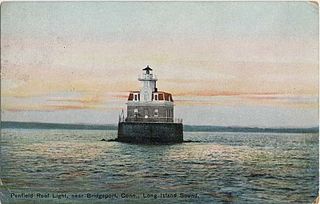Suicide
The Winchester Mystery House and Other Haunted Places
Why do some places feel as if they were intentionally designed to creep us out?
Posted January 29, 2018

The movie Winchester, starring Helen Mirren, is opening this week; this has caused me to reflect once again upon the nature of haunted houses.
I have written about this before as I explored the architectural elements that contribute to the spookiness of an old house. One of the big ones is a lack of what environmental psychologists call “legibility”—the ease with which a place can be recognized, organized into a pattern and recalled.
In other words, a place that we can wander around in without getting lost.
In the prototypical haunted house, darkness and a confusing layout may cause us to get lost, or at the very least, slow us down if we need to make an escape.
Why the Winchester House Feels Haunted
The Winchester Mystery House in San Jose, California possesses the key ingredients of a haunted house in spades, and it is reputed to be the most haunted house in the world—it allegedly houses more than one thousand different ghosts!
This house was originally the home of Sarah Winchester, who was the widow of William Wirt Winchester, the gun manufacturing magnate. Construction of the house began in 1884, completely unguided by any sort of coherent building plan, and it continued unabated until 1922. At least part of the construction was driven by the need to repair extensive damage from the 1906 San Francisco earthquake.
Rooms, whimsical architectural features, and different wings and floors were added haphazardly, resulting in a rambling, bizarre puzzle of secret passageways, stairways and doors that do not go anywhere, and windows with views into other interior rooms. There is even a room constructed specifically for conducting séances. At its peak, the house had over 500 rooms, more than 10,000 windows, and many dozens of fireplaces and stairways.

In short, the Winchester Mystery House is the epitome of illegibility, and it is not surprising that ghosts took up residence there in very short order.
Haunted houses are usually portrayed as being in remote, isolated locations, far removed from the rest of society (think of the off-season resort hotel in The Shining, for example). If bad things were to happen, help would be a long time coming, even if communication with the outside world were possible.
Lighthouses are frequently Believed to be Haunted as well
Given all of this, it is not surprising that remote structures such as lighthouses are frequently thought of as a bit creepy in spite of the natural scenic beauty that usually surrounds them -- most old lighthouses have at least one ghost story or legend associated with them.
The lighthouse at Plymouth Bay in Massachusetts is reportedly haunted by the ghost of Hannah Thomas, the first official female lighthouse keeper in America, while the Big Bay Point lighthouse in Michigan is haunted by the spirit of one of its former keepers, William Prior, a man who hanged himself in the nearby woods following the death of his son.

The Penfield Reef Lighthouse near Fairfield, Connecticut is the site of frequent appearances by the ghost of Frederick Jordan, the keeper of the lighthouse who drowned after his boat capsized in a storm less than 200 yards away from the lighthouse. Jordan’s ghost is not all bad. Two boys were rescued by an unidentified man after their boat capsized near the lighthouse in 1942. They later identified their rescuer as Jordan after seeing a picture of him; the only problem is that Jordan had drowned in 1916.
Moans, shrieks, ghostly footsteps, and phantom smells are also reported to be common experiences in lighthouses throughout North America.
Professional investigator of the paranormal Joe Nickell has studied haunted lighthouses and concluded that most of these experiences can probably be traced to the more mundane combination of active imaginations, wind blowing through old pipes, and the settling sounds made by old buildings. However, once a legend begins, it becomes self-perpetuating.
Like lighthouses, most haunted houses have some sort of legend associated with them.
It usually involves a story about a macabre death or accident. There may even be a history of suicide and murder, as in the famous house in Fall River, Massachusetts where Lizzie Borden allegedly murdered both of her parents with an ax. A less well-known ax murder house is located in the small town of Villisca, Iowa. In June of 1912, eight people (including six children) were murdered with an ax, and the crime was never solved. The house still stands, and it is widely believed by the locals to be haunted by the ghosts of the children who can be heard laughing, crying, and warning each other to hide.
The elegant but haunted Lemp Mansion in St. Louis is haunted by the ghost of a man who killed himself in the house, along with the ghosts of three of his children who each committed suicide in the very same house at different times in the years that followed the suicide of their father.
Leap’s Castle in Ireland is haunted by the ghost of a priest who was stabbed to death by his own brother while saying mass, with his entire family in attendance; the room of the grisly murder is now appropriately known as “The Bloody Chapel.”
One of the main reasons why we think that older places are more likely to be haunted is simply because there’s been much more time for tragic things to have taken place. Stimuli such as moldy odors, antiquated Victorian or Gothic architecture, wood interiors and old portraits on the wall reinforce an ambiance of great age and make the place seem creepier.
What Makes Abandoned Prisons, Asylums, and Orphanages so Scary?
Sociologist Margee Kerr has noted that places that isolate people without their consent such as prisons and insane asylums are often considered scary. I would take this one step further and propose that any institution that once housed any “troubled” population of people may become “contaminated” by this association in the minds of imaginative individuals and thereby be believed to more likely to visit trouble upon visitors who dare to explore such places. So, it is not surprising to find that prisons, orphanages, and hospitals are ubiquitous on virtually every list of haunted places.

Pennsylvania’s Eastern State Penitentiary is a famously creepy place.The prison opened in 1829 and it was one of the first places to experiment with a range of “rehabilitation” techniques such as solitary confinement. It is gigantic, dark, gloomy, and altogether foreboding. In its day, it housed some of the most violent and troubled people in the country. According to Kerr, it has become the most popular American haunted attraction outside of an amusement park, and it runs an annual spooky event known as “Terror Behind the Walls.”
Other old U.S. prisons, notably the old West Virginia State Penitentiary, have reopened for business as haunted houses.
The building reported to be the most haunted place in Sydney, Australia, is also a former prison. Known as the “Hyde Park Barracks,” this place was built to hold male convicts in the early 1800s. Visitors to the old barracks report encounters with a variety of ghosts who are often seen wearing prison garb.
In St. Augustine, Florida, one can find a haunted masonry fort (The Castillo de San Marcos) full of legends and spirits, most famously the ghost of the wife (along with that of her lover) of a military officer who had been in charge of the fort. When the officer learned about his cheating wife, or so the story goes, he had the two culprits entombed alive by chaining them to a wall and having another masonry wall constructed in front of them. In spite of many chilling accounts from individuals who claim to have stumbled upon the skeletal remains of the unfortunate lovers, the story has been exposed as nothing more than a fable. This does not, however, prevent visitors from getting a good case of the willies when they visit the fort.
The old jail in Nelson County, Kentucky, is now a bed and breakfast that comes complete with hauntings by the ghosts of long-dead inmates.
Probably the most famous of America’s haunted prisons is Alcatraz Island in San Francisco Bay, populated by the ghosts of many of the notorious convicts who once called Alcatraz home.
In my own state of Illinois, there is an abandoned orphanage that was once known as “The Civil War Orphans Home.” It opened in 1865 in the city of Normal and it stayed open for more than 100 years. Since it closed, it has fallen into disrepair and its old-school architecture and dilapidated condition make it anything but inviting. For a while, children who died there were buried in a cemetery on the grounds and rumors abound concerning the ghosts of the orphans who still haunt the place. Similar spooky abandoned orphanages shrouded in folklore also exist in other countries, including Germany, Greece, Turkey, and the Ukraine.
Abandoned haunted hospitals, especially haunted mental hospitals, are also easy to find. Many of them are still littered with rusting outdated medical equipment and supplies, and almost every one of them is thought to be inhabited by the suffering ghosts of the tortured souls who once walked their corridors. Some of the best known of these include the Pennhurst Asylum in Pennsylvania, the abandoned psychiatric hospital in Parma, Italy, the Cambridge Military Hospital in England, the Waverly Hills Sanatorium in Louisville, Kentucky, the Trans-Allegheny Lunatic Asylum in West Virginia, and the Willard Asylum for the Chronic Insane in Willard, New York.
For more of my thoughts on why we see ghosts, check out one of my earlier essays for Psychology Today.




